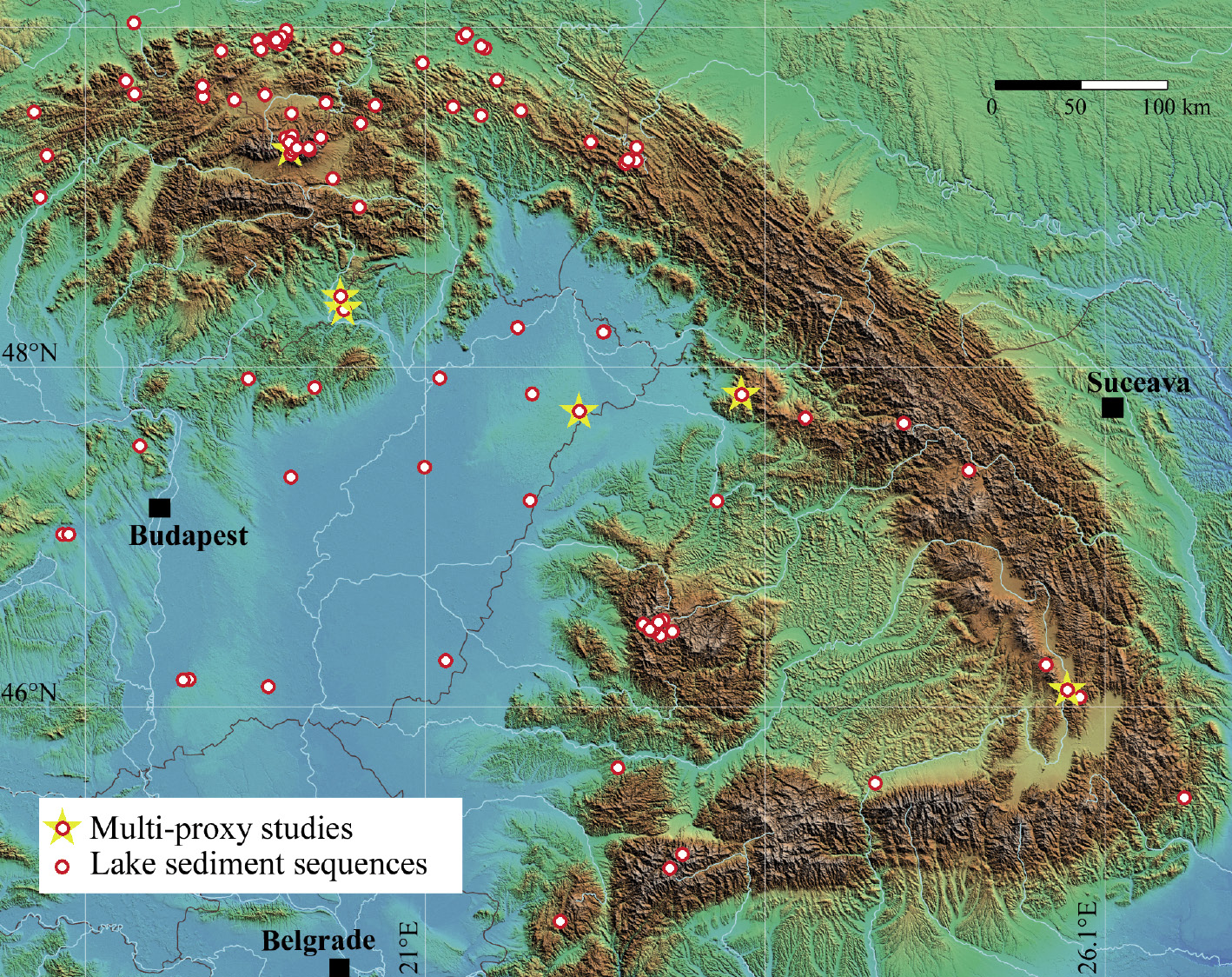- Home
- Publications
- PAGES Magazine
- Climate Change In The Carpathian-Balkan Region During The Late Pleistocene and Holocene
Climate change in the Carpathian-Balkan region during the Late Pleistocene and Holocene
Marcel Mindrescu
PAGES news
20(1)
54
2012
 |
Marcel Mindrescu
Department of Geography, University of Suceava, Romania; marcel.mindrescu gmail.com
gmail.com
1st International Workshop, Suceava, Romania, 9-12 June 2011
The Carpathian Mountains are considered as one of Europe’s last “wilderness” areas, but are nevertheless under heavy pressure from human activities. Examples range from large-scale activities (e.g. sulfur mines in Calimani), ecological disasters (e.g. tailing dam failures in the Toroiaga and Baia Mare areas) to cross-border pollution (e.g. Chernobyl nuclear accident). The current political thrust for development is accelerating the pace of industrial activities, exploitation of natural resources and tourism.
Romania has just recently been integrated into the European Union and many community-based projects were initiated to evaluate problems related to climatic and anthropogenic impacts. However, the Carpathian Mountains remain the least studied mountain range in Europe. This paucity of research projects in the region is reflected by the low number of well-dated and high-resolution paleo-records (e.g. Buczkó et al. 2009, Fig. 1). Rose et al. (2009) published a pollution history study from a lake in the Retezat Mountains at the western extremity of the Southern Carpathians, but no similar studies exist for the rest of the mountain range, despite the abundance of lakes (Akinyemi et al., in press).
The purpose of this workshop was to bring together an international group of scientists interested in the Carpathian-Balkan region to discuss research results and promote opportunities for interdisciplinary and international collaboration. The workshop was co-sponsored by the University of Suceava, the Applied Geography Association (GEOCONCEPT), the Mountain Research Institute (MRI) and PAGES.
The program centered on oral and poster presentations as well as open discussions on the climatic and environmental dynamics during the Pleistocene and Holocene in the Carpathian and Balkan mountains. The workshop featured 36 talks and 15 posters. The 70 participants were from Romania, Hungary, Germany, United Kingdom, Bulgaria, Slovenia, Ukraine, Poland, Switzerland, Czech Republic and Belgium. The entire workshop was webcast and it was educational for young researchers and students by providing them a platform to present their results to an international audience and discuss their research in a multidisciplinary community.
A post-symposium field trip was organized to the formerly glaciated alpine ranges of the Northern Romanian Carpathians (Rodna Mountains), as well as to several large peat-bog accumulations and wetland ecosystems (Iezer lake and Poiana Stampei peat bog).
The organizers of the workshop offered to lead publication of the more advanced workshop contributions in a special issue of the journal Quaternary International and 29 author groups committed themselves to contribute papers.
In order to promote follow-up activities in the region, the “Suceava working group” was created under the lead of Marcel Mindrescu, Angelica Feurdean, Enikő Magyari and Dan Veres. A group website is currently being set up (http://atlas.usv.ro/www/climatechange/) and grant proposals will be prepared. The group will also coordinate the organization of a second regional workshop in 2013 or 2014. Further activities, such as summer camps or meetings in the field will also be considered.
references
Buczkó K, Magyari EK, Bitušík P and Wacnik A (2009) Hydrobiologia 631: 3-28
